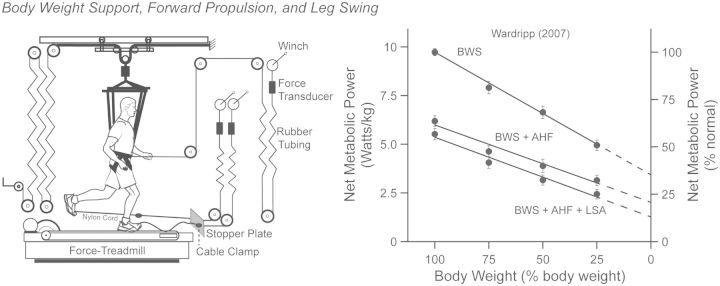Fig. 4.

When considering their interactive nature, the synergistic tasks of body weight support, forward propulsion, and leg-swing exact a metabolic cost that is less than physiologically possible, thus providing a more coherent explanation for the metabolic cost of running. The experimental set-up consists of strategic combinations of BWS, an optimal aiding horizontal force about the waist (AHF), and an optimal leg-swing assistive force at the feet (LSA). The regression lines represent changes in the net metabolic cost of running when applying BWS, BWS + AHF, and BWS + AHF + LSA. The BWS condition demonstrates that the net metabolic cost of running decreased in less than direct proportion to the level of BWS. When extrapolating the BWS line to zero body weight, the regression value suggests that the task of body weight support exacts ∼65% of the net metabolic cost of running. When extrapolating the BWS + AHF line to zero body weight, the regression value suggests that the synergistic tasks of body weight support and forward propulsion exacts ∼80% of the net metabolic cost of running. When extrapolating the BWS + AHF + LSW line to zero body weight, the regression value suggests that synergistic tasks of body weight support and forward propulsion along with the independent task of leg-swing exacts ∼87% of the net metabolic cost of running. The data (mean ± SEM) and least-squares regression lines are derived from the study noted in the figure.
